Dell Precision M6700 Notebook Review: The Enterprise Split
by Dustin Sklavos on December 12, 2012 7:43 PM ESTDisplay Quality
For whatever reason, ColorEyes Display Pro just refuses to cooperate with the LG Philips IPS panel Dell uses in their Precision M6700 unless you calibrate at a Gamma of 1.8 instead of 2.2. This produces a fine image, but it visibly loses a lot of the pop, saturation, and gamut of the display's default calibrations. Note that Dell includes PremierColor software that actually allows you to switch between different color gamuts, and it's a welcome feature.
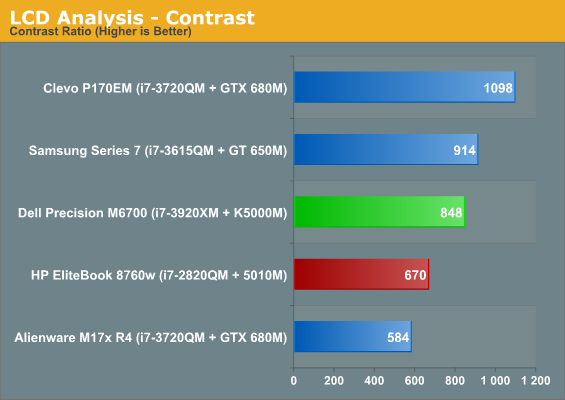
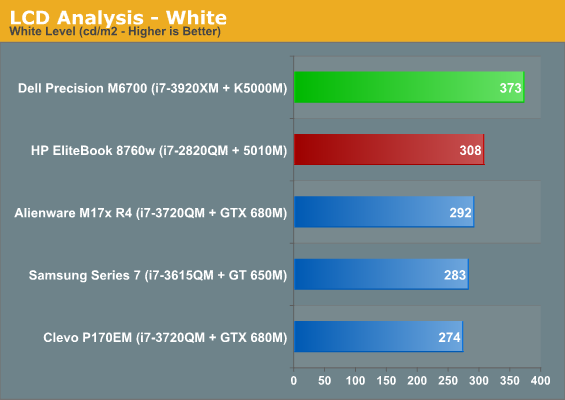

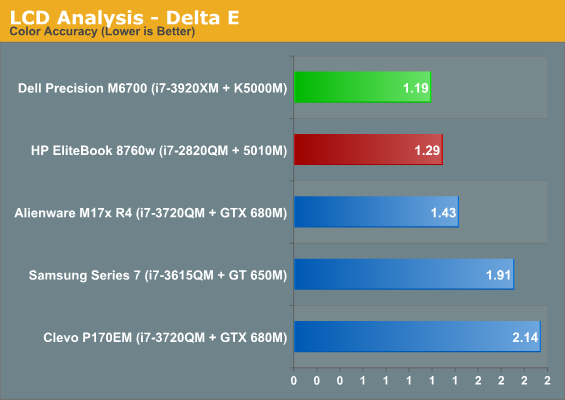

The measurements are generally solid, with the PremierColor display at least offering a solid sRGB color gamut. Unfortunately due to issues with ColorEyes Display Pro I'm unable to confirm whether or not it can truly produce the entire AdobeRGB1998 color gamut like Dell claims it can, but honestly I believe it can.
Frankly it's a beautiful display and anecdotally it's on par with the DreamColor display-equipped EliteBook I currently have in house for testing, maybe even a step up due to Dell's PremierColor software which allows you to not only choose the color gamut you want to work with, but will even detect applications and adjust accordingly.
Battery Life
Where these workstations are still lagging substantially behind their consumer counterparts is in their power management technology. NVIDIA's Optimus has been thriving for years now on consumer GPUs, but Quadro chips still don't benefit from it. AMD just got Enduro working well on their mobile GPUs, but it's not functioning on FirePro chips either. As a result, the Dell Precision M6700 is forced to employ an oversized battery to compensate.
Update: Mea culpa. While Optimus is functional on NVIDIA's mobile Quadro GPUs, the use of a 10-bit IPS panel (along with either a 120Hz panel or touchscreen) precludes it due to bandwidth limitations. As a result, the M6700's battery life is going to be substantially lower with the PremierColor display, but I would actually expect M6700s with a standard TN panel to produce running time closer to the Alienware M17x R4, which has a smaller battery but similar silicon.

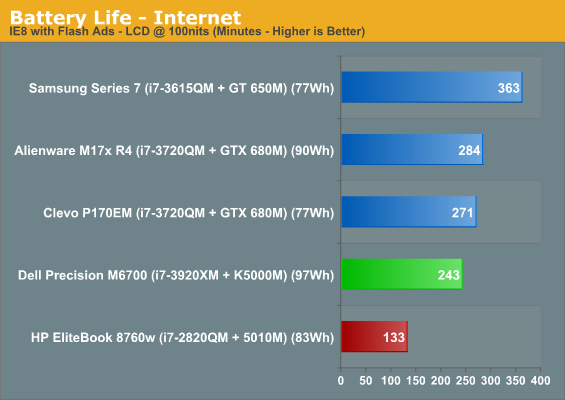
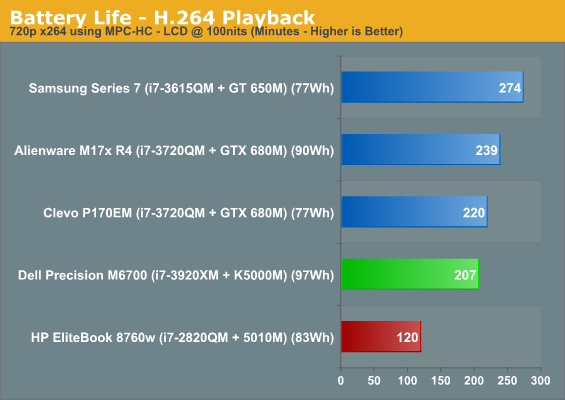
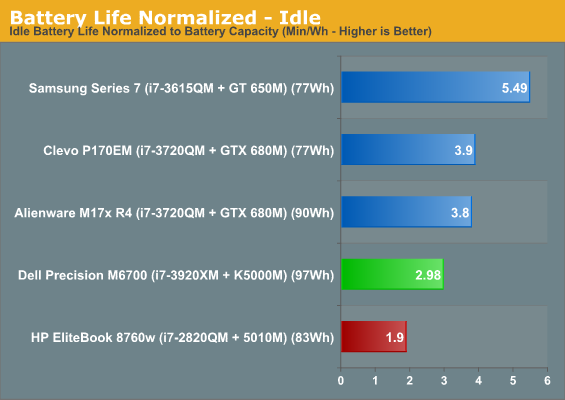
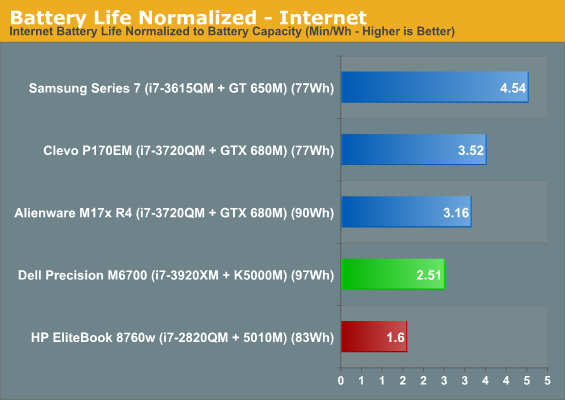
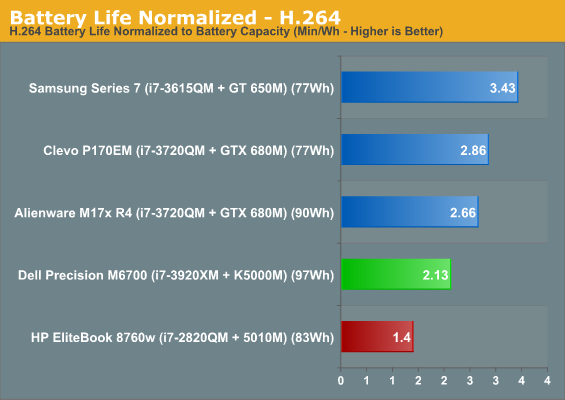
Optimus-enabled notebooks are able to get at least a little more mileage. The M6700's battery life actually isn't that bad given that it's a workstation notebook, owing at least somewhat to both Ivy Bridge's frugal power consumption and Kepler's superior idle power compared to Fermi.
Heat and Noise
Thankfully, the Dell Precision M6700's beefy cooling system keeps the notebook running both reasonably cool and quiet. Keep in mind that we're working with a combined TDP of roughly 155W on the CPU and GPU in this system when you take a look at the thermals below.

The CPU runs nice and toasty, but the M6700 is actually very effective at keeping the K5000M cool. Noise levels are very good, with the notebook basically inaudible at idle and fan noise being a low, quiet whoosh under load.


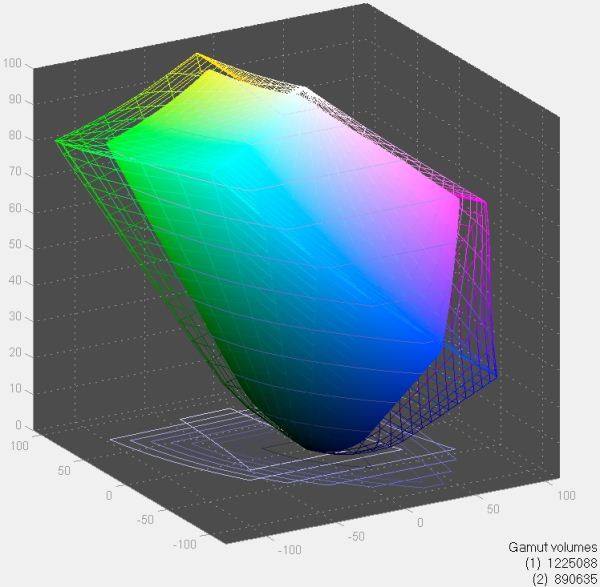








125 Comments
View All Comments
hrrmph - Thursday, December 13, 2012 - link
WiFi-ac?More crickets.
-
p05esto - Thursday, December 13, 2012 - link
And in a couple years where there WIFI-ac routers and services on the market I'm sure the M6900 will support it. Right now, totally not needed. Are you an Apple sheep or soemthing?critical_ - Friday, December 14, 2012 - link
Does anyone make half-length mini-PCIe 3x3 (or greater) 802.11ac cards these days? Last I checked there isn't one BUT once there is replacing the wireless card in the M6700 shouldn't be tough.hrrmph - Friday, December 14, 2012 - link
Good point.For what its worth, WiFi-ac is the only one of these subjects that I have any sympathy for the manufacturers on.
It is THIS year's nascent technology. Its hard, but not impossible to get this year's new tech onto a machine.
I use the laptop at home primarily, and infrequently in the field.
In the field I need autonomy for up to 2 months at a time, sometimes in very far flung places with little else available infrastructure-wise besides mains power and maybe 3G or 2G GSM. Hence the obsession with local storage, but I digress.
At home, I have ADSL.
The NetGear WiFi-ac router R6300 is available now at Amazon. I think it is 3 x 3 so you might get close to Gigabit WiFi speeds, or in actual practice, maybe 75% of Gigabit WiFi speeds. That's a very impressive boost over WiFi-n.
The equivalent NetGear ADSL Gateway Modem with built in WiFi-ac Router is the D6300. It is currently available at Amazon UK and should be available stateside any day now.
WiFi-ac is today's reality. Why buy an uber-expensive laptop this year when next year's model will have wireless that is 5 times faster...
Unless you want to gamble on the upgrade working.
I hope that you are correct that these machines can be upgraded from WiFi-n to WiFi-ac with a simple mini-card replacement.
But, when I tried to upgrade my existing ancient HP 17" from WiFi-g to WiFi-n, it didn't work. So I emailed HP and asked why. They said that for the newer WiFi-n mini-cards to be compatible, the BIOS needed to be changed and that HP wasn't willing to issue the necessary BIOS revision.
Granted my machine isn't a mobile workstation (it is one grade below that). I would hope that in the future if I pony up the cash for a mobile workstation class machine, that the manufacturers would be more accommodating with BIOS revisions than what I've experienced with the "desktop replacement" class laptop that I have now.
-
ShieTar - Friday, December 14, 2012 - link
So? You connect to your own company network by cable anyways, and if you are traveling, what are the chances that even if you find a WiFi-ac connection that there is an Internet-Connection behind it that is actually fast enough to utilise -ac speeds?hrrmph - Thursday, December 13, 2012 - link
UEFI capable BIOS?What happens when drives exceed 2TB capacity. Is the Dell machine stuck? Or does it have UEFI so that it can keep on keepin' on?
Th HP has it. I presume the Dell does too and the reviewer just didn't mention it. Still, it would be nice to know.
Dell's website on the subject of UEFI: Silent.
-
critical_ - Thursday, December 13, 2012 - link
Yes it is UEFI, has Secure Boot, etc.hrrmph - Thursday, December 13, 2012 - link
Sounds like the IPS panels are troublesome.Also, both Dell and HP make you drop extra equipment like the telephony SIM slots and GPS capabilities if you choose the IPS displays.
So how much Adobe RGB gamut do we give up if we downgrade to the non-IPS panels?
For graphics non-pros would it be noticeable? Annoyingly so?
-
critical_ - Thursday, December 13, 2012 - link
I am a M6700 owner. The IPS display causes the loss of Optimus. This is due to the display chain being pure 10-bit throughout which the Intel HD 4000 can't do.As far as SIM slots and GPS goes... Dell's online configuration tool won't allow you to add these but they all come with a SIM slot and antenna leads for a WWAN (and GPS) module regardless of the screen you pick can be added separately. I'm running the Dell 5630 (Gobi 3000) without any issues that I added myself.
hrrmph - Thursday, December 13, 2012 - link
Bummer on battery life...Anyone want to guess if Haswell fixes this?
I'm guessing not, unless Intel redesigns the EUs.
------------------------------------
Sweet! on SIM and GPS.
Just to be clear:
Is the SIM slot full-sized? (I hate to even ask, knowing it must be, but you just never know what you aren't being told when you buy something)
Are the antennas themselves already installed?
If not, did they come with the Dell 5630 card?
Thx
-